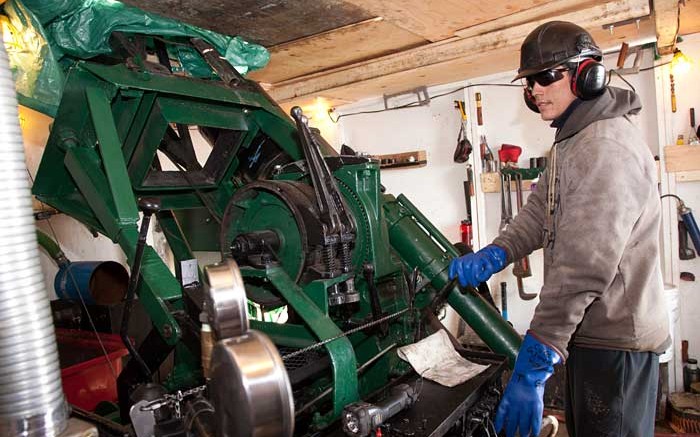With positive results rolling in from the mid-year exploration program at its Kennady North project in the Northwest Territories, Kennady Diamonds (TSXV: KDI; US-OTC: KDIAF) is rethinking its expectations for the project.
Kennady released yet another set of high-grade drill results from the project in early August, just two weeks after drilling its longest intercept of kimberlite to date.
At the Faraday kimberlite, a 933 kg sample returned a total of 4,628 diamonds weighing 4.76 carats for a grade of 5.1 carats per tonne.
If only the commercial-sized diamonds (larger than 0.85 mm) recovered from the sample are considered — 97 diamonds weighing a total of 3.62 carats — the sample grade shrinks to a still impressive 3.88 carats per tonne.
The three largest diamonds weighed 0.4 carat, 0.25 carat and 0.22 carat. Almost all of the commercial-sized diamonds are described as transparent and either white/colourless or off-white.
Meanwhile, drilling at the Kelvin kimberlite hit a 183-metre interval of kimberlite in July — the longest yet at the project.
The interval, which was drilled north of Kelvin and outside of the geological model for the kimberlite, could expand the tonnage Kennady is expecting from the project, where a mini-bulk sample is under way.
In a release, Kennady CEO Patrick Evans said the company is rethinking its geological model at the project, 280 km northeast of Yellowknife. The company had expected Kelvin and Faraday to hold 5 million to 8 million tonnes of kimberlite.
“Delineation drilling to the north of the Kelvin kimberlite is exceeding our expectations,” Evans said in a release. “Based on the results from the first three Kelvin delineation drill holes, we are currently reviewing our tonnage estimate for the Kelvin–Faraday kimberlite corridor, which we expect to increase beyond the current 5- to 8-million-tonne estimate.”
So far, the current program has returned intervals of between 72.6 metres and 183 metres (not true thicknesses) of kimberlite at Kelvin. The 183-metre interval started at 151 metres depth and ended at 431 metres.
Kelvin and Faraday are both kimberlite dykes of variable width, with Kelvin ranging from a couple of metres to 20 metres wide over a 1 km strike length. The kimberlites are 3 km apart and 9 km northeast of the Gahcho Kué mine being built by De Beers and Mountain Province Diamonds (TSX: MPV; NYSE-MKT: MDM).
Based on encouraging results, Kennady has doubled its mid-year drill program to 10,000 metres and added a third drill rig.
In addition to collecting drill core for the mini-bulk sample, the junior is conducting delineation drilling at Kelvin and Faraday, and exploration drilling at the MZ and Doyle kimberlites, and at four new exploration targets.
Results from the mini-bulk sample at Kelvin are expected early in the fourth quarter. So far, 7 tonnes of kimberlite have been collected.
The company is hoping to outline a resource of at least 10 million carats — 5 million tonnes grading 2 carats per tonne at a minimum — before year-end.
Last year’s 8,500-metre drill program, however, hinted at much higher grades than 2 carats per tonne. A 4.3-tonne sample from Kelvin returned a grade of 5.38 carats per tonne, while a 116 kg sample from Faraday returned 11.23 carats per tonne.
Shares in Kennady Diamonds traded recently at $6.89. The stock has traded in a 52-week range of $1.76 to $8.74, with 22.9 million shares outstanding.


Be the first to comment on "Kennady North diamond project exceeds expectations"